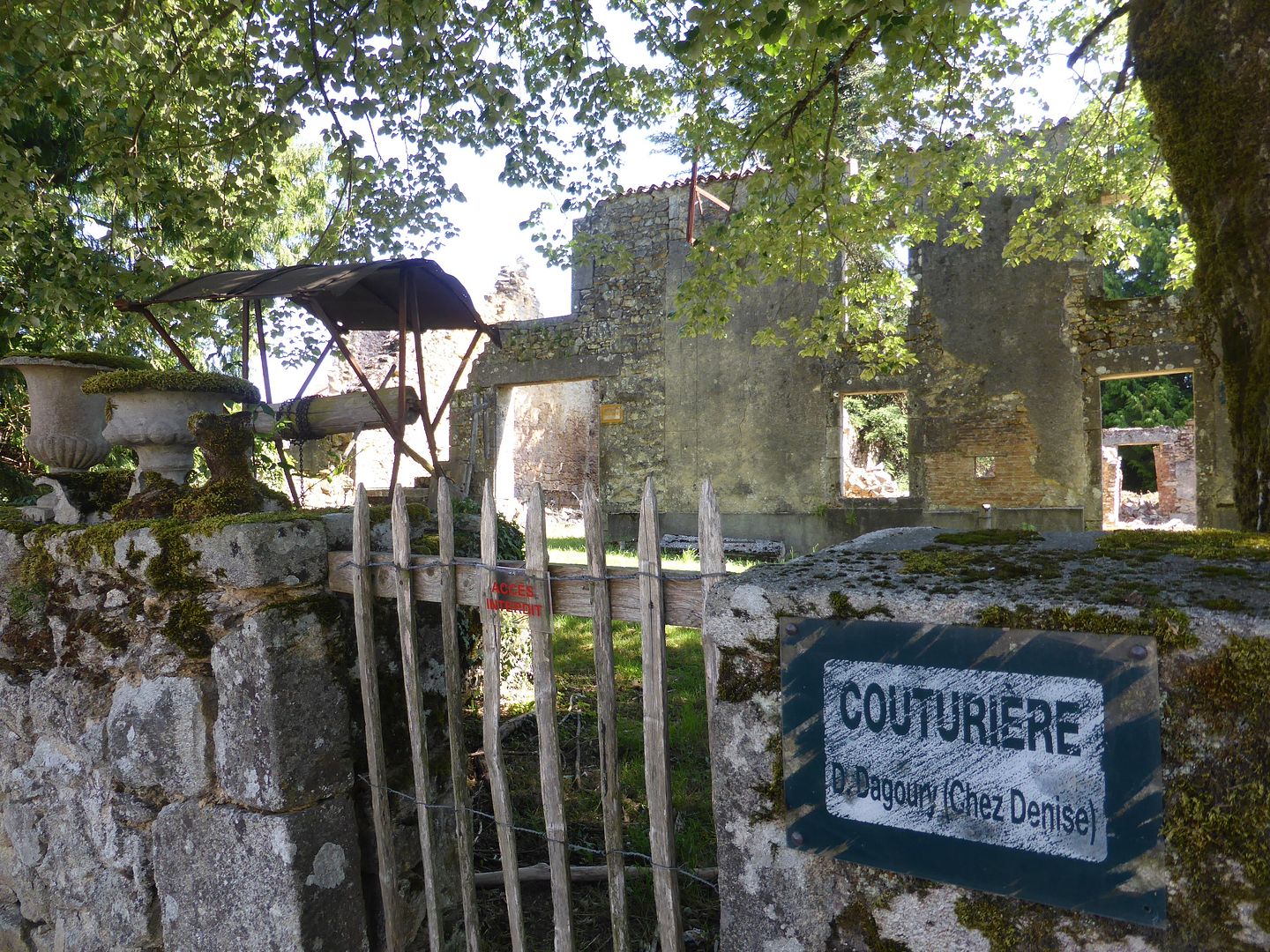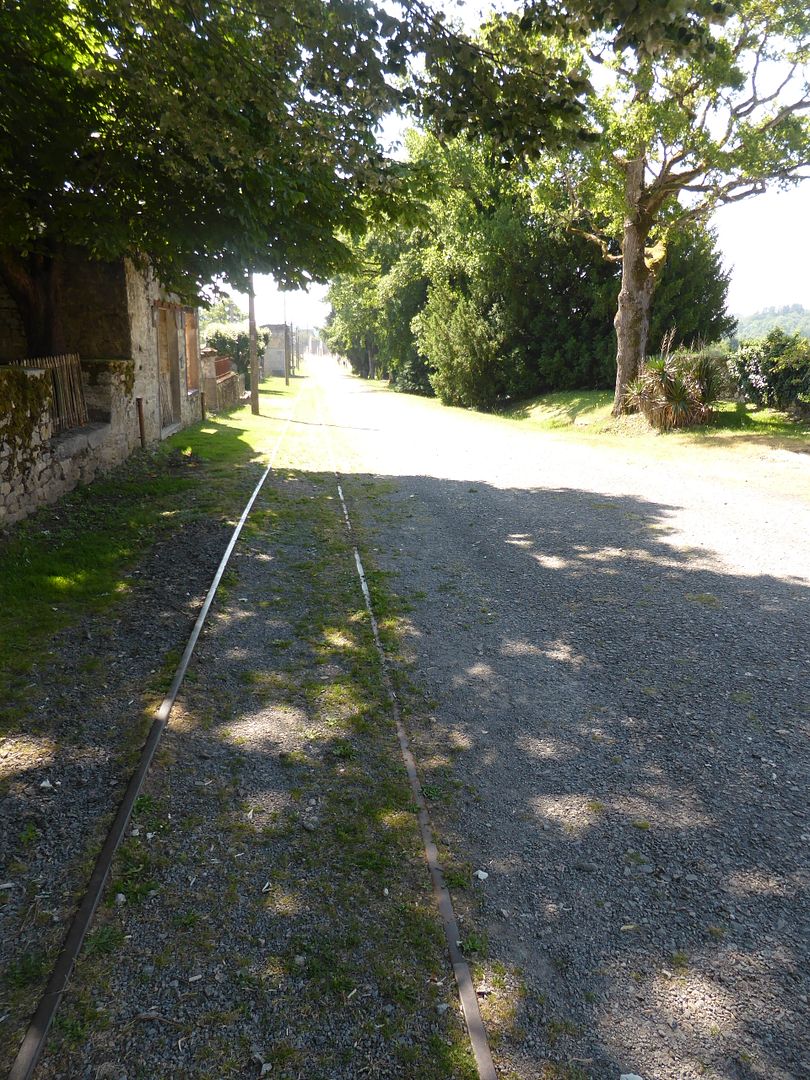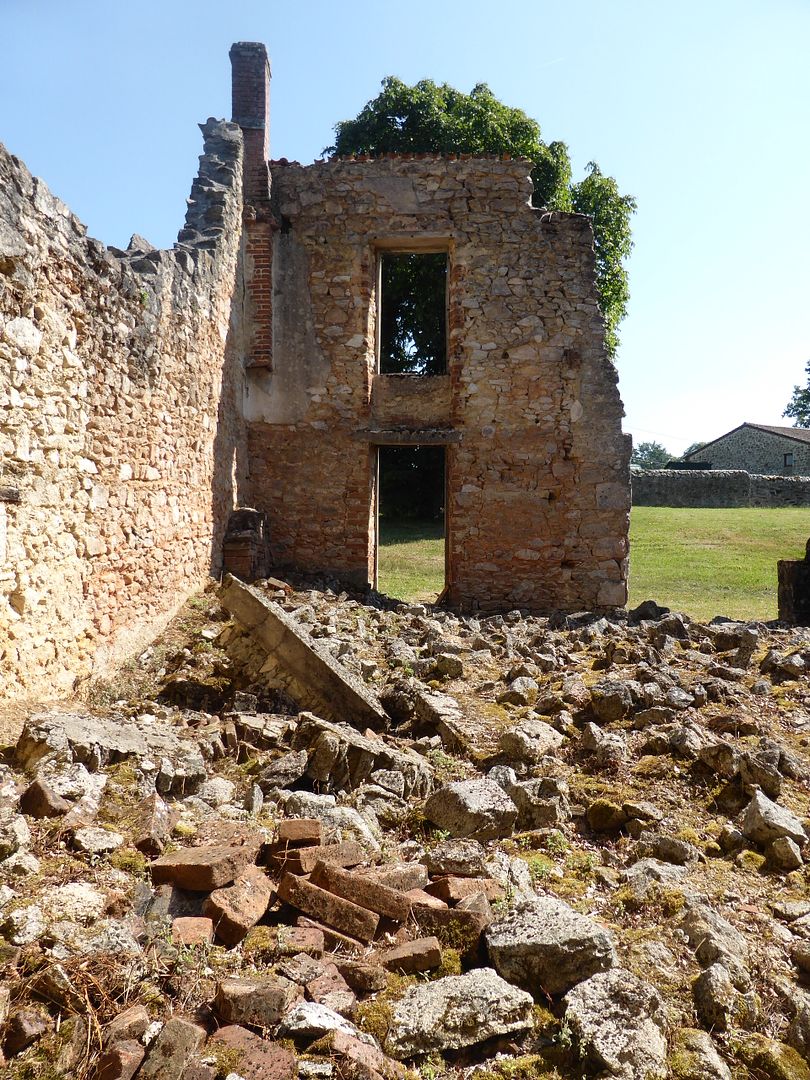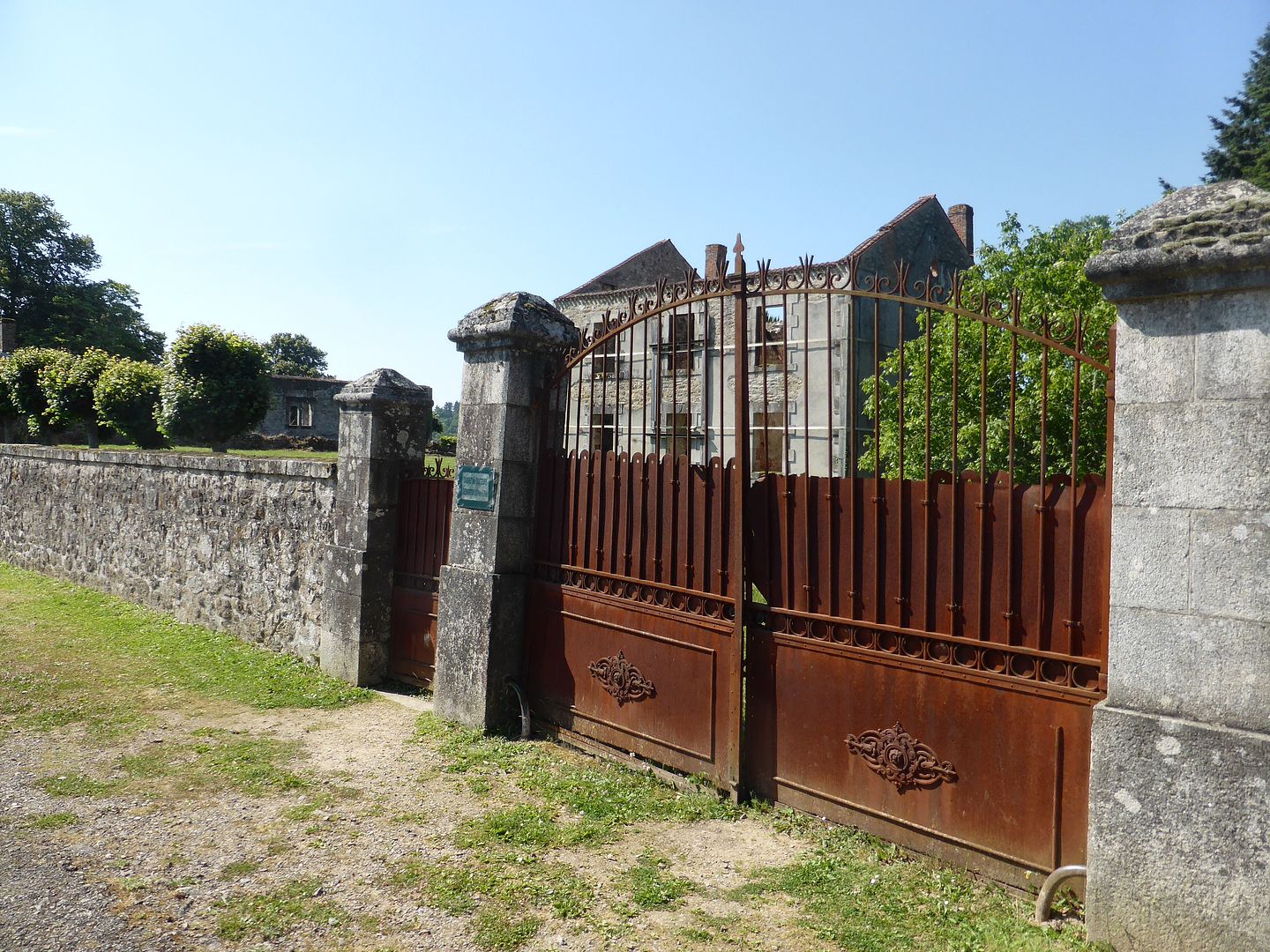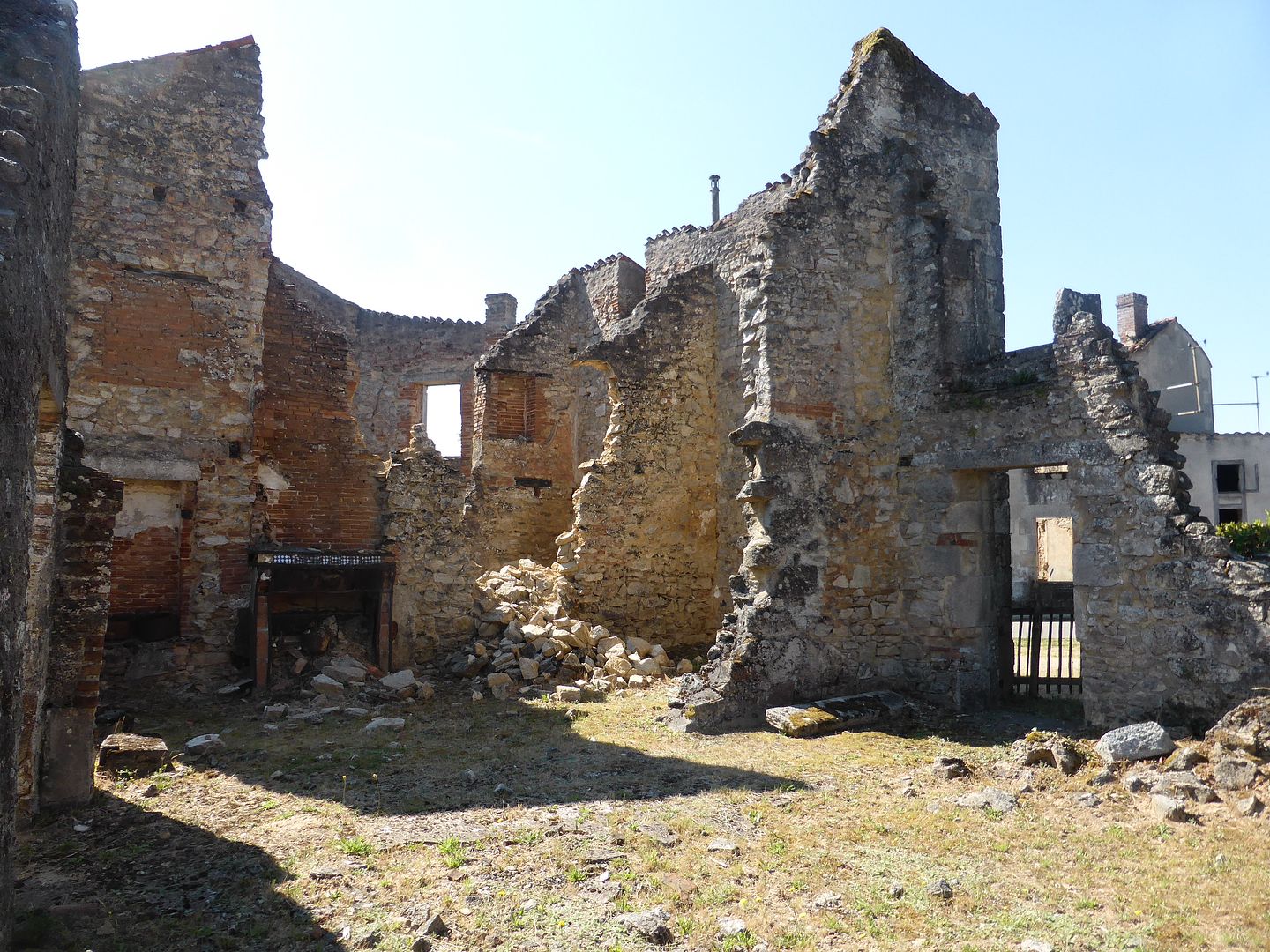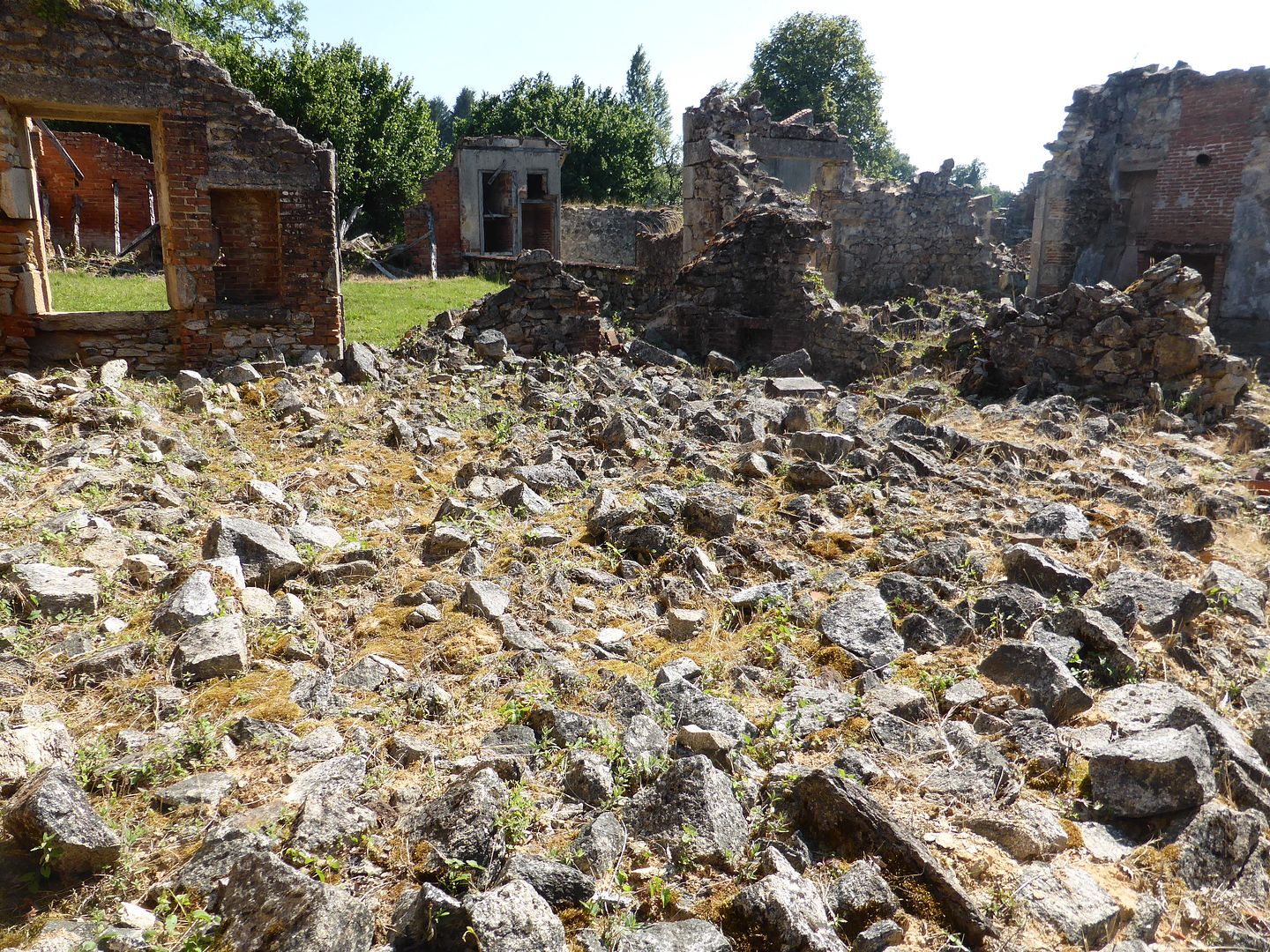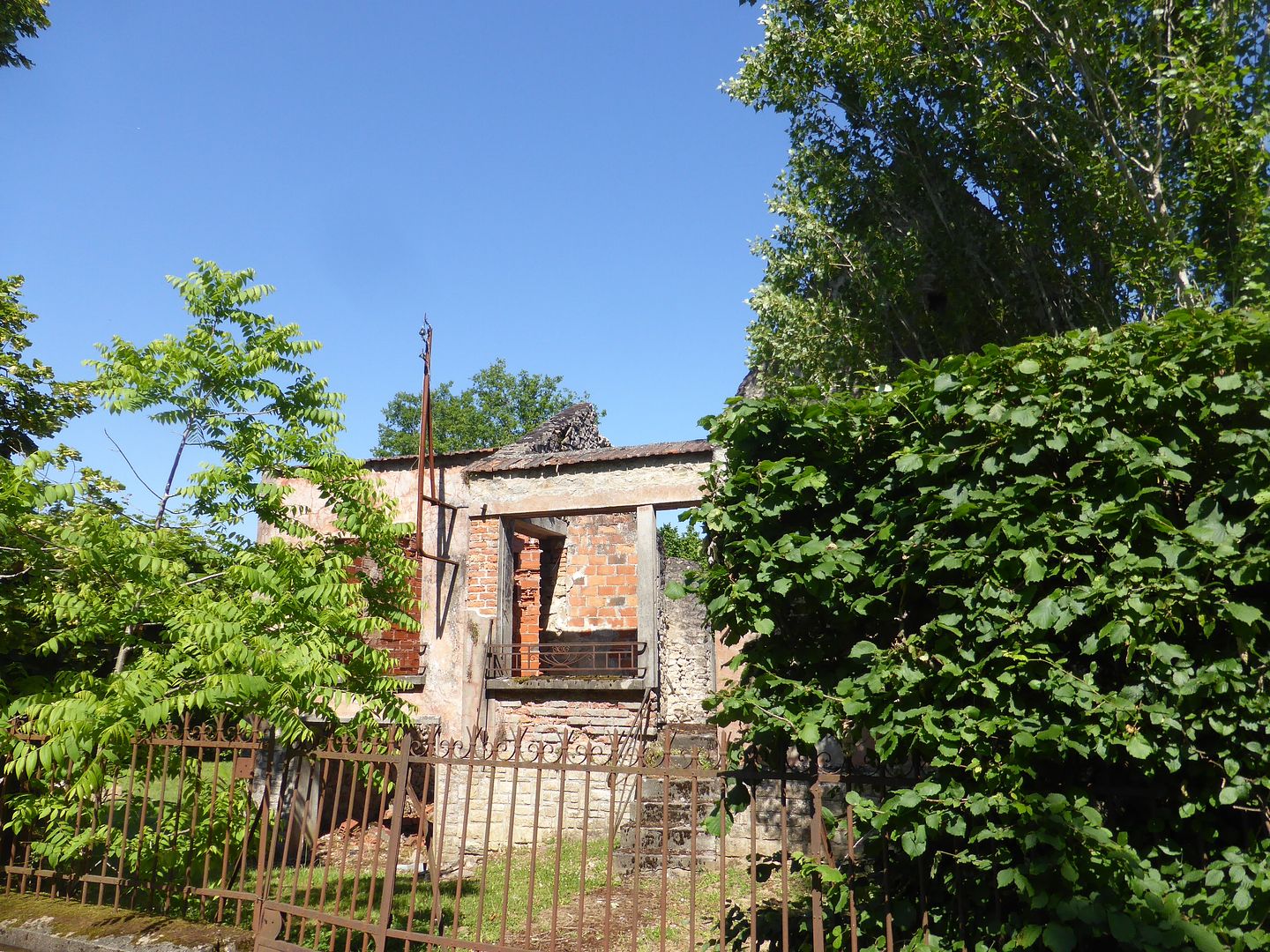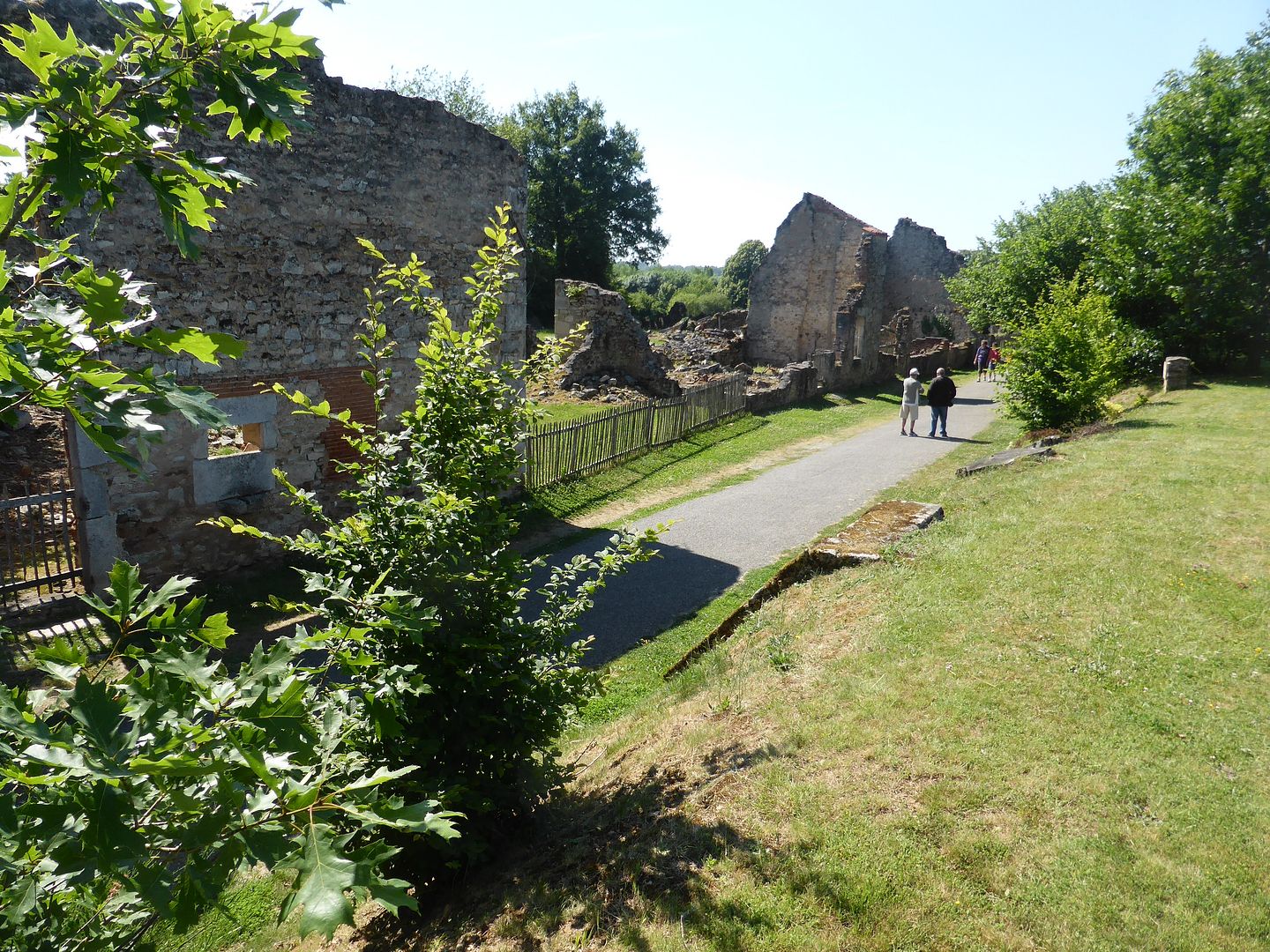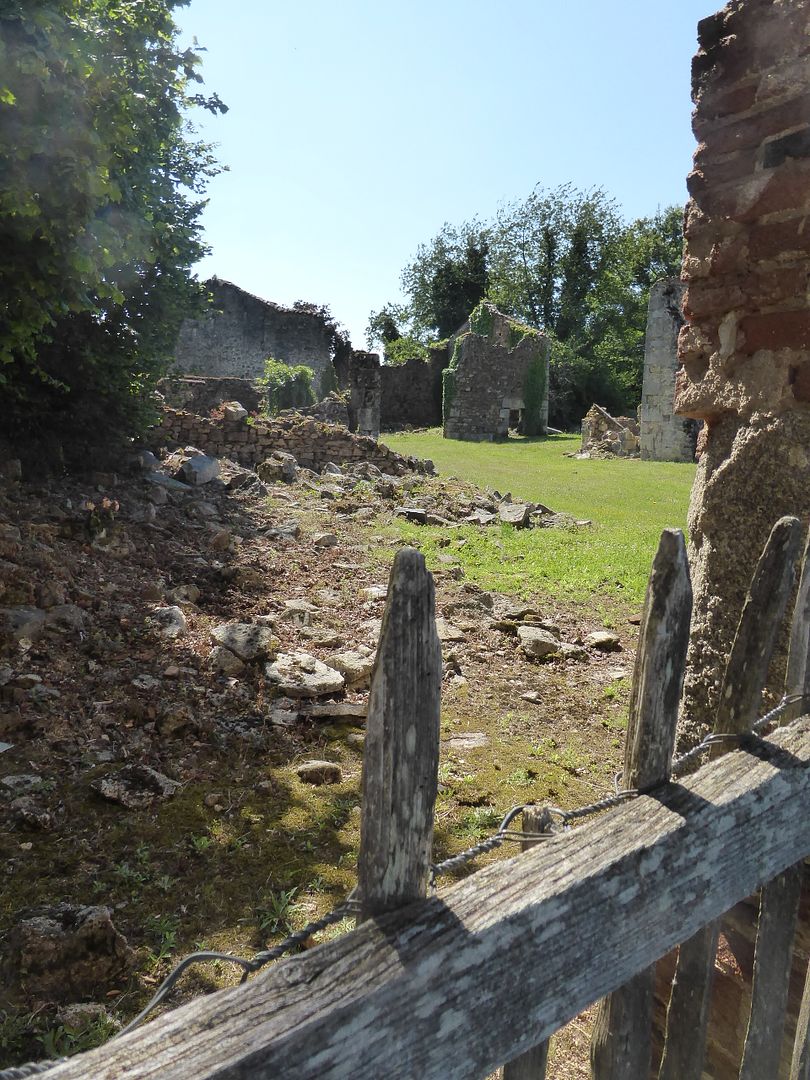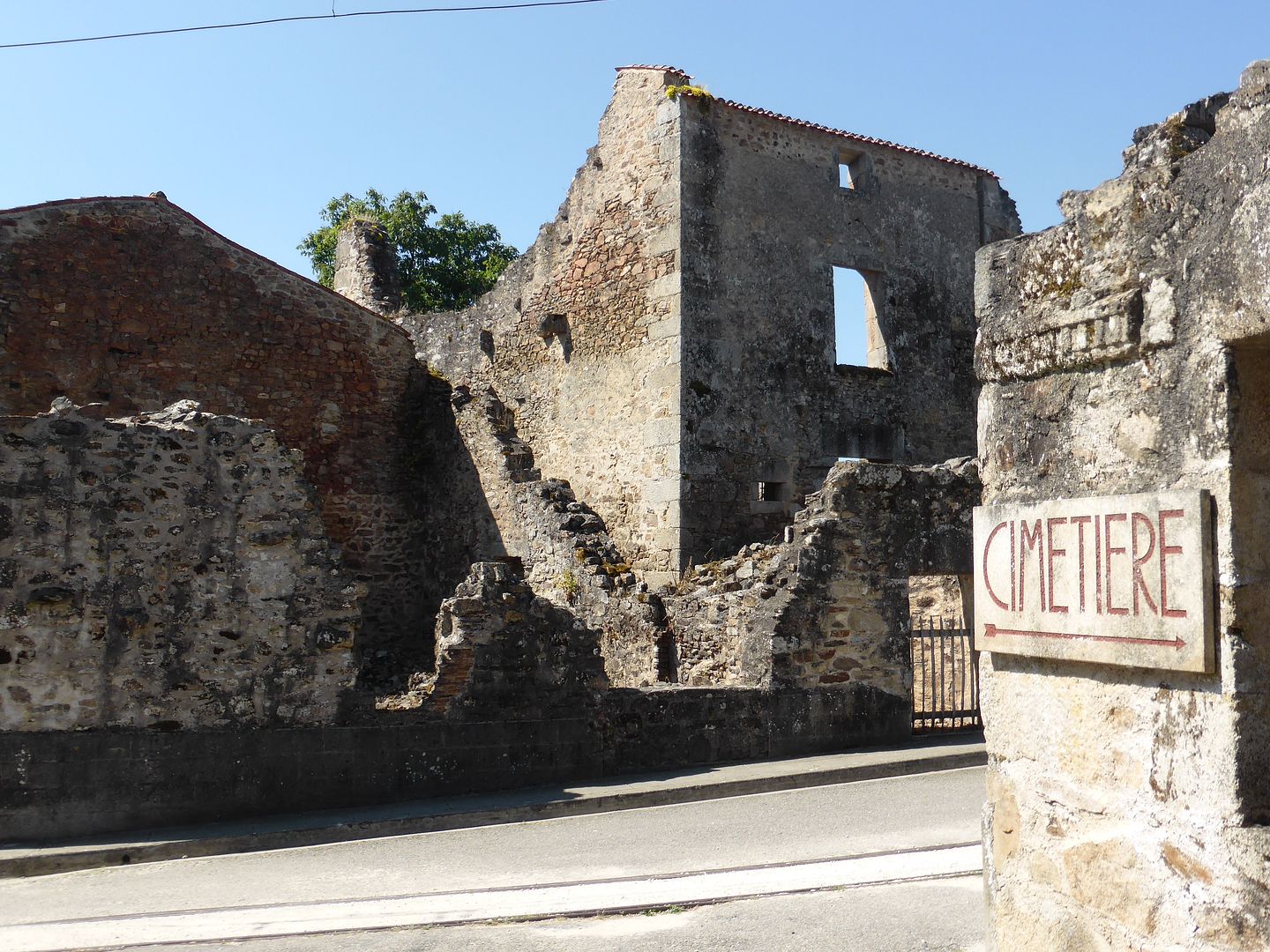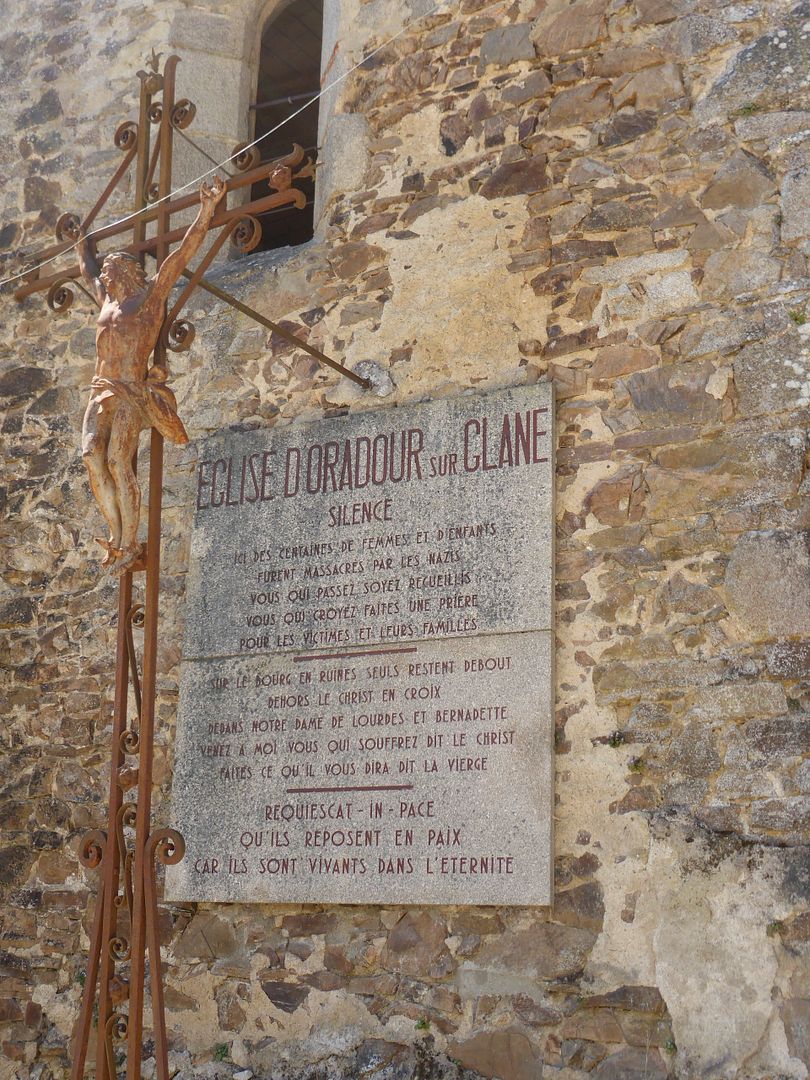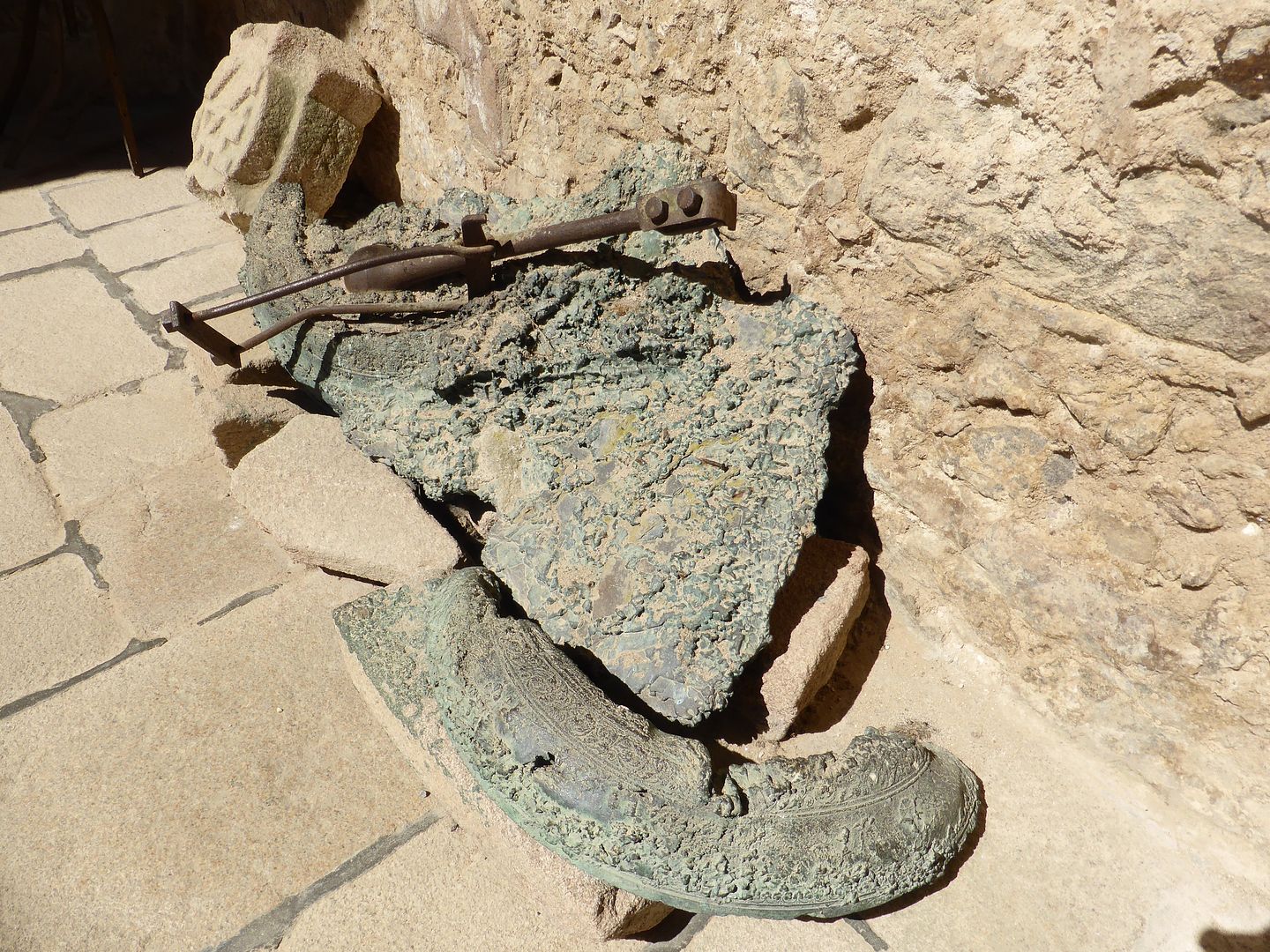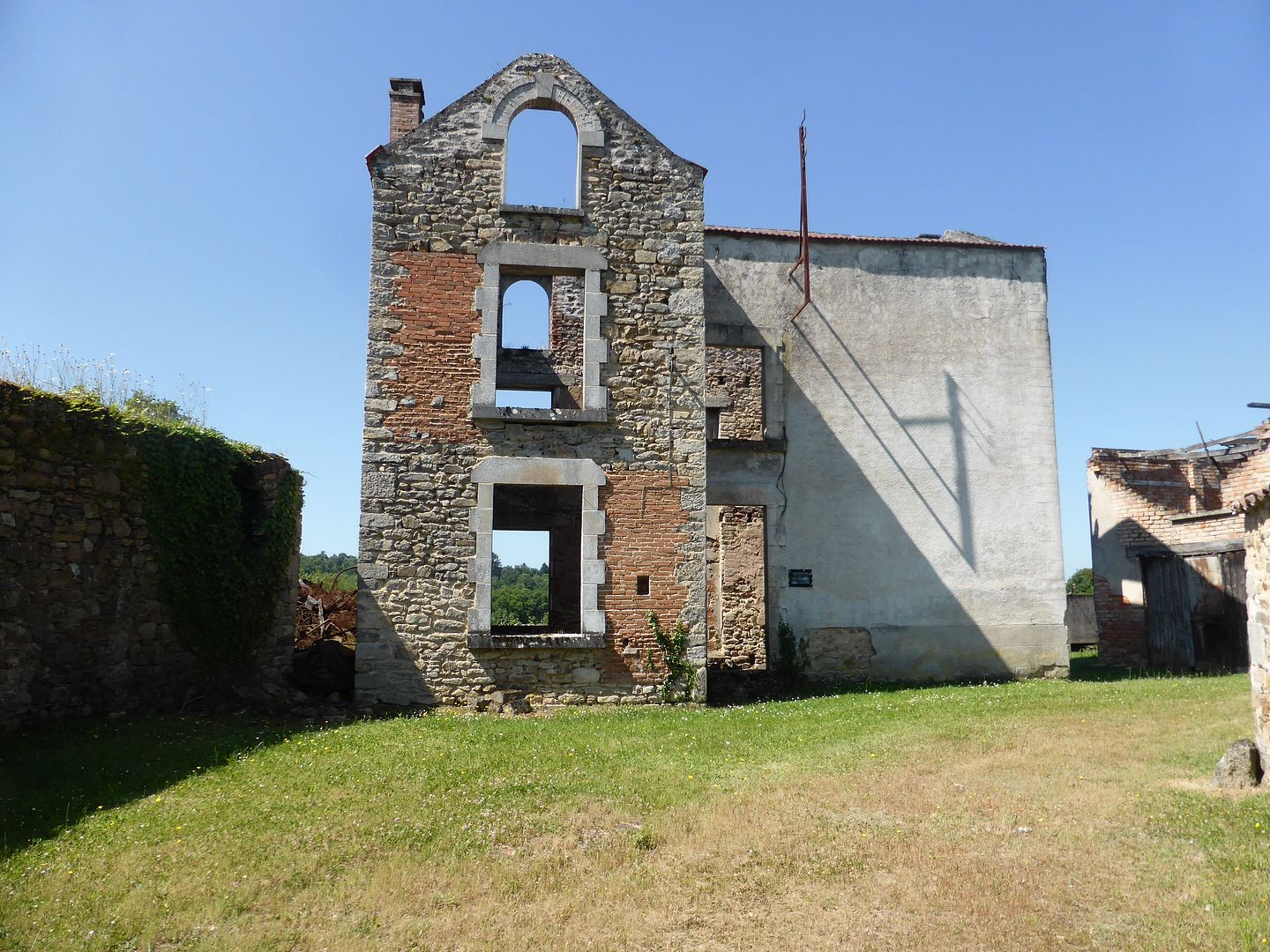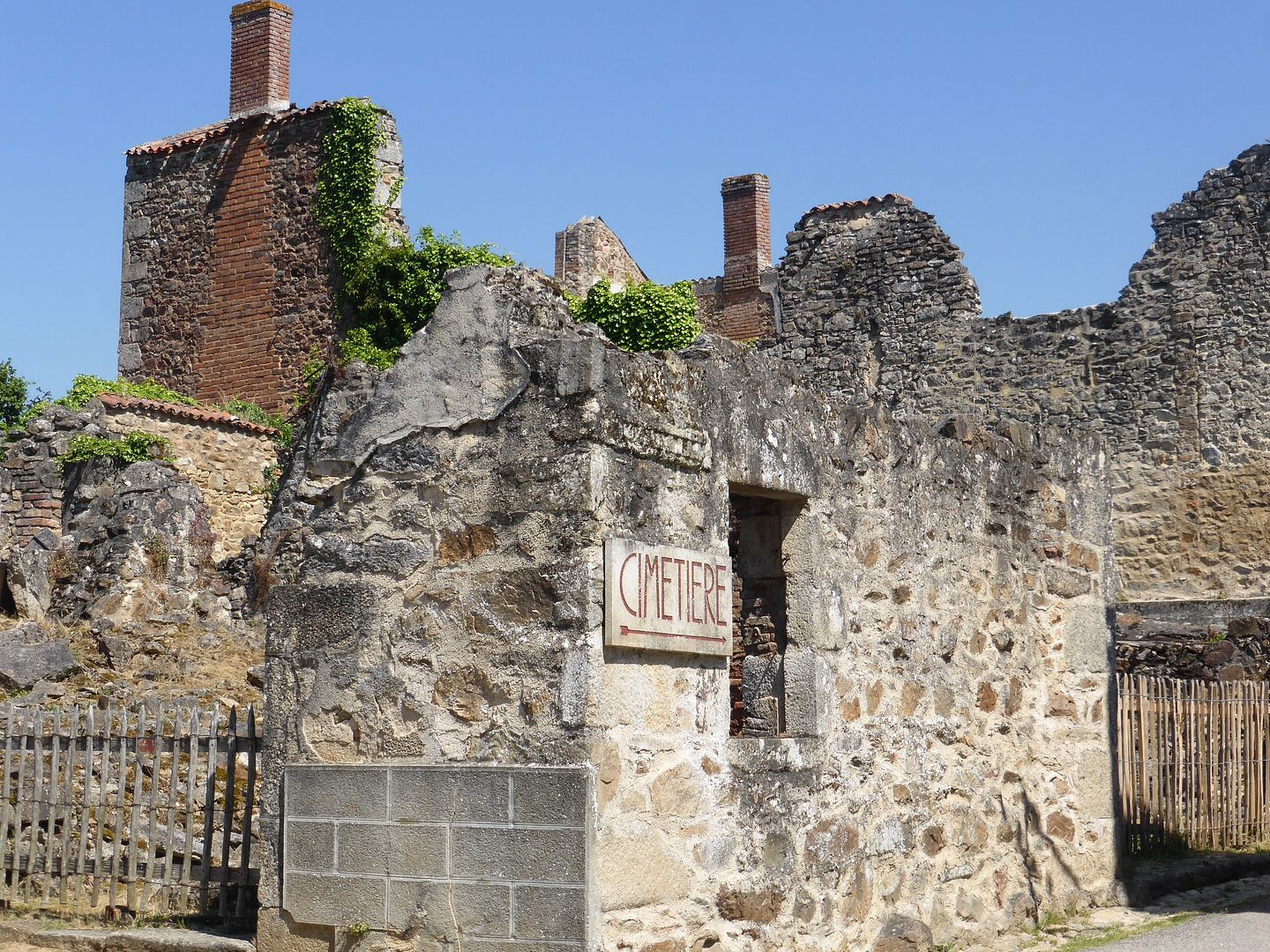Oradour-sur-Glane 2014 (by kerouac2)
Jun 19, 2014 12:43:15 GMT
Post by Deleted on Jun 19, 2014 12:43:15 GMT
I already made a little report about Oradour here 4 years ago, but I only had 4 old photos that I had taken at least 15 years earlier. There isn't much to it, so you don't have to go hunting for it and anyway I will repost the four photos again at the end of this report because the contrast is really striking compared to my new photos.
Some of you may remember that Oradour is France's preserved "martyred village" 25 kilometres from Limoges. It can't really be said that the massacre went unnoticed when it occurred, but the event occurred on June 10, 1944 just 4 days after D-Day in Normandy, so just about everybody had their eyes on the battle of Normandy. The Limousin region where Oradour is located was almost untouched by the war until this happened, and that is one of the elements that still makes this an open wound in the area 70 years later.
Why did the Oradour massacre occur? Well, it must be admitted that the Allied landing in Normandy was probably partly responsible. The resistance movement throughout France became much more active the moment the Allies arrived in Normandy, and the Nazi commanders felt it was necessary to smash them back into submission as quickly as possible. The rule of thumb was that for every German soldier wounded, 5 local residents would be executed by hanging and for each German soldier killed, there would be 10 executions. After D-Day, some of the Nazi divisions in the area were ordered to move to Normandy to assist the troops already there. They began to encounter quite a bit of resistance, and they reacted brutally, killing all of the partisans that they could get their hands on and shooting civilians at random as well. One of the batallion commanders, a certain Adolf Diekmann, even managed to horrify the other commanders because he deliberately killed women and children. The nearby city of Tulle was briefly liberated by the partisans, but it paid a heavy price when 99 men were hanged from balconies and lampposts and another 149 were immediately deported.
Things were degenerating more and more and Adolf Diekmann decided that more extreme measures were called for. On June 9th and 10th some prepatory meetings were held, and Oradour was selected. The German troops, including some forcibly enrolled soldiers from annexed Alsace, arrived at Oradour at the beginning of the afternoon on the 10th.
The armoured vehicles encircled the village and then a half dozen of them drove into town on the main street. These were actually the first German troops that most of the villagers had ever seen. Some of the shops rolled down their metal shutters as a precaution, but others kept doing business while keeping an eye on the soldiers. About 120 people immediately ran away through the hedgerows, which is what they all should have done, even though given the reputation of the Waffen SS, they all ran the risk of having a bullet in the back.
The Germans found the town crier and ordered him to call for a general assembly of all villagers. Unfortunately, there were quite a few more people in the village than usual, because it was a distribution day for tobacco and meat, so a lot of the outlying farmers had made a special trip to Oradour. Lots of people came willingly -- they thought there was going to be a routine announcement or something. Everybody else was forced towards the centre of the village, and the soldiers began to search all of the buildings. Invalids and sick people were pulled out of their beds. One additional piece of bad luck was the fact the Oradour had four schools. Even though it was Saturday afternoon and there were no classes in session, all of the children had been called to school that day for a medical checkup.
Okay, you can see where this story is going, so I'll just cut to the chase. 180 men and boys over the age of 14 were taken to six different execution sites in groups of about 30. These were buildings which they were order to empty of everything inside. They did not know why. And then at 4pm, the Nazi soldiers were ordered to kill them all, which was done in about 90 seconds of machine gun fire. The first round was to the legs, and when they were all on the ground, their bodies were riddled with bullets. Since there were still some moans and cries, the lucky ones received a bullet to the head, because immediately afterwards, the piles of bodies were covered with straw, hay and bundles of wood and set on fire, so a lot of them just burned to death.
Meanwhile, 350 women and children had been assembled in the church. An explosive incendiary device was placed right in the middle and set alight. The wooden chairs and other bundles of wood were thrown on the victims. The fire in the church was so intense that the bell melted and is still lying on the floor. One woman escaped by squeezing through a little window. Another woman saw her and threw her baby out the window and then managed to crawl out, too. But the soldiers saw her, so she and her baby were killed.
Out of each group of Nazi soldiers, the ones who were not shooting the villagers were told to go through the houses and collect all items of value -- jewellery, money, fabric, musical instruments, bicycles and livestock. They also took hundreds of bottles of wine and champagne.
What was happening in Oradour did not go unnoticed in the surrounding farms, as the people had heard gunshots and also their children had not returned from their medical examination. So a lot of people came towards the village, and most of them were murdered as well. 642 people died in all on that day.
I'll get to some of the repercussions later, but it's time to look at some pictures. An underground memorial museum was opened in 1999 next to the site. So now you park your car, go into the memorial (no photographs allowed) and then you exit into the ruins of the village. On the day I visited, most of the tourists appeared to be German. I guess this is a good thing.

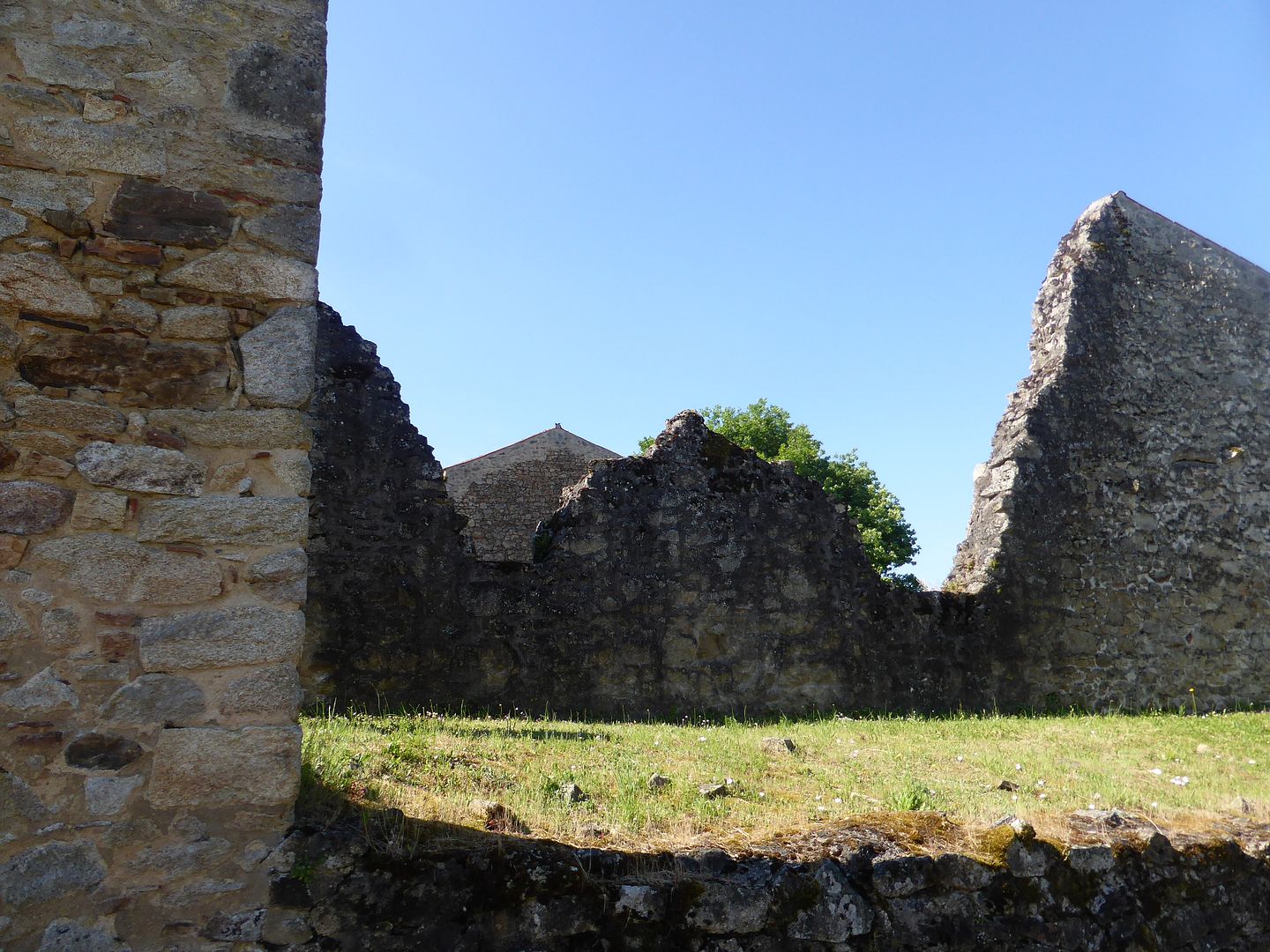
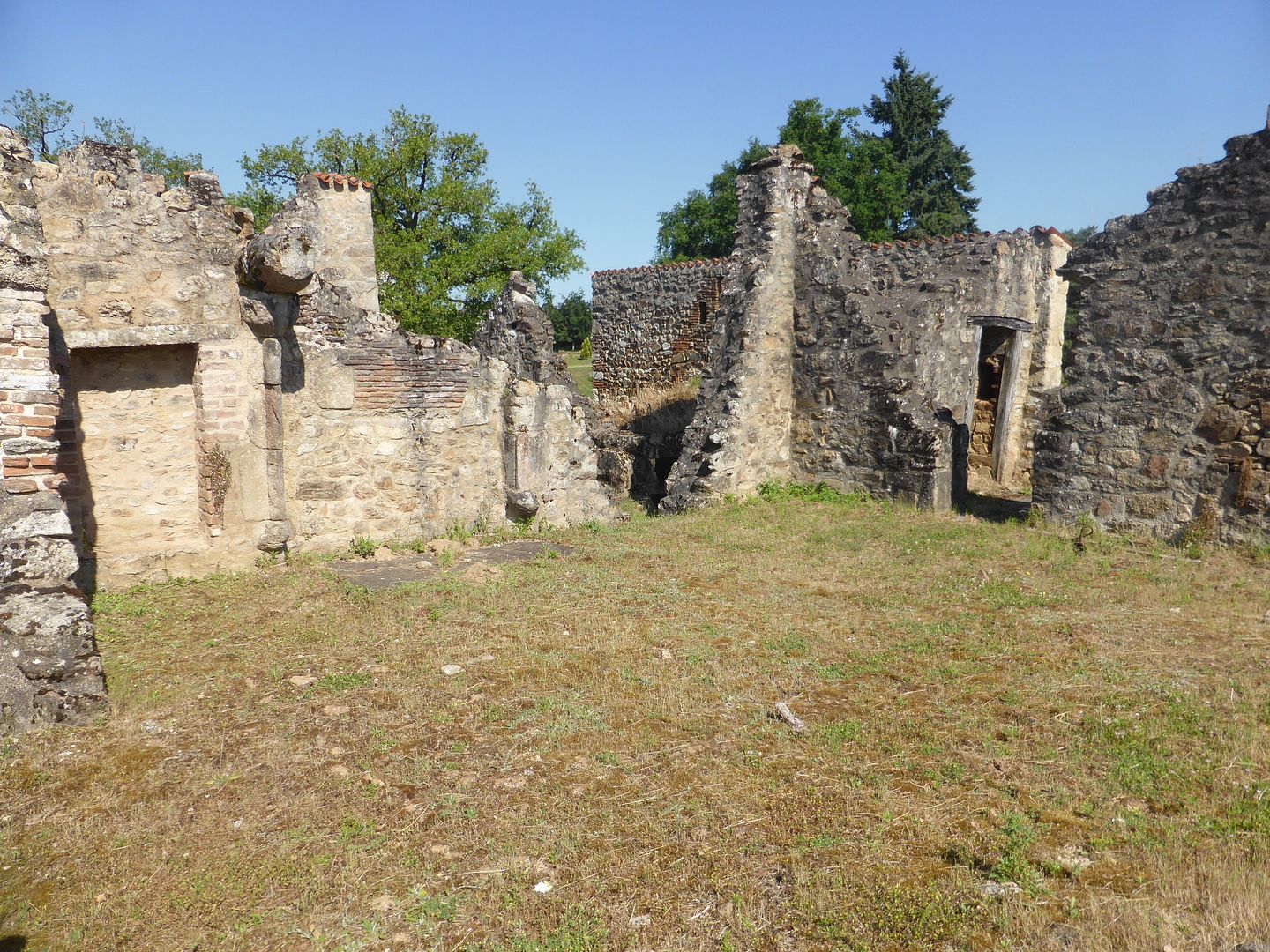


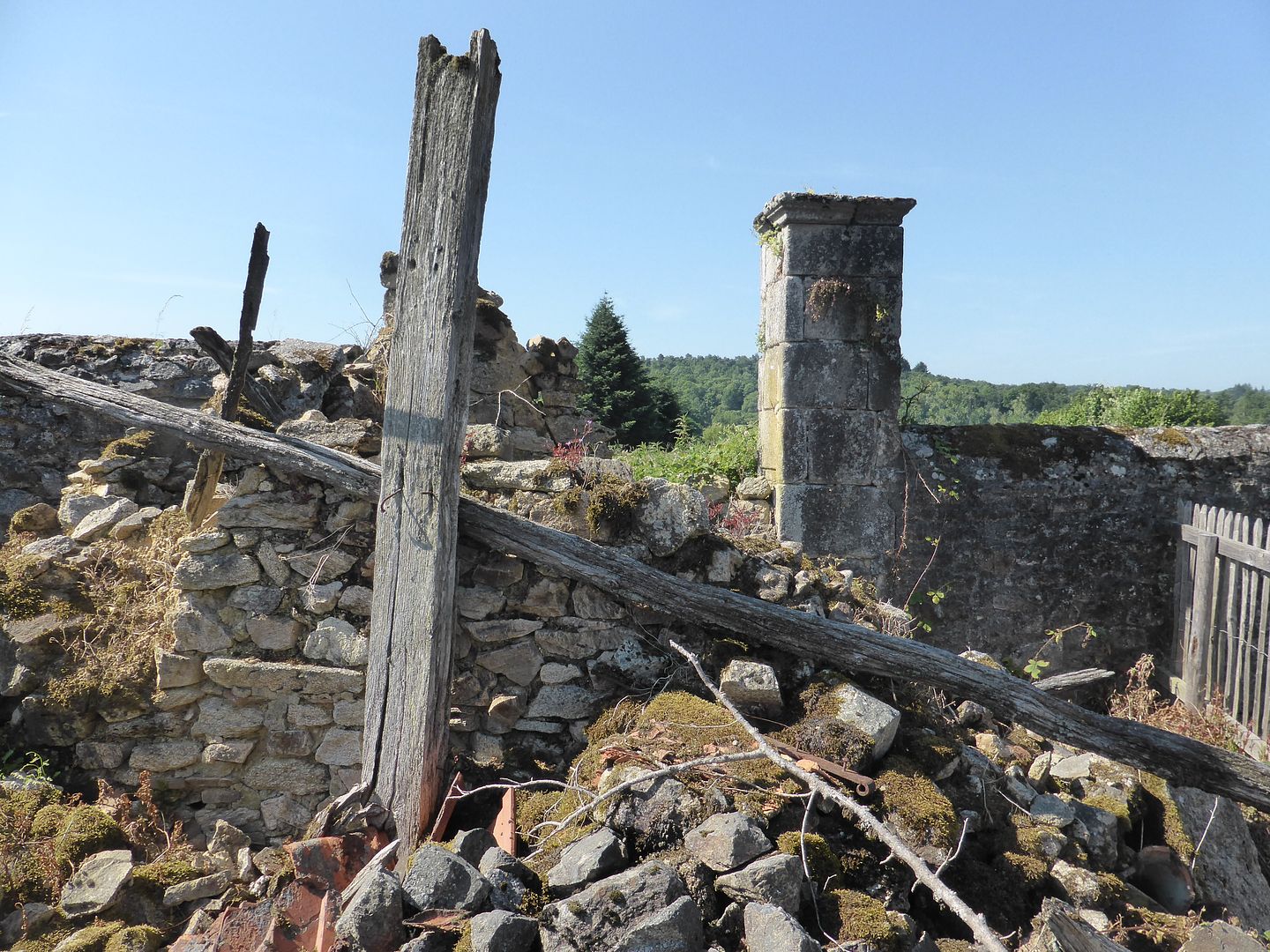



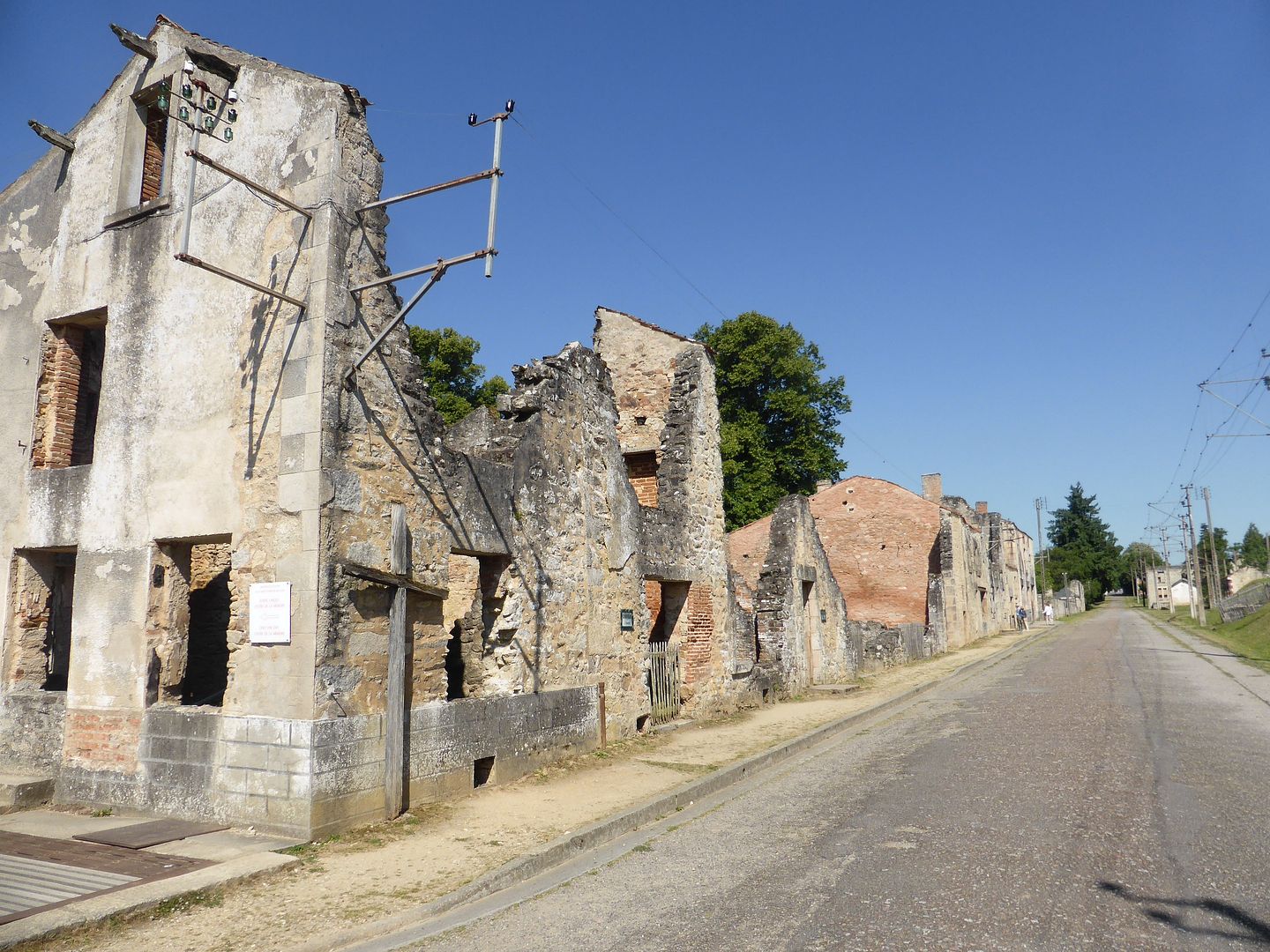
This is the old tramway station.


This is the post office.

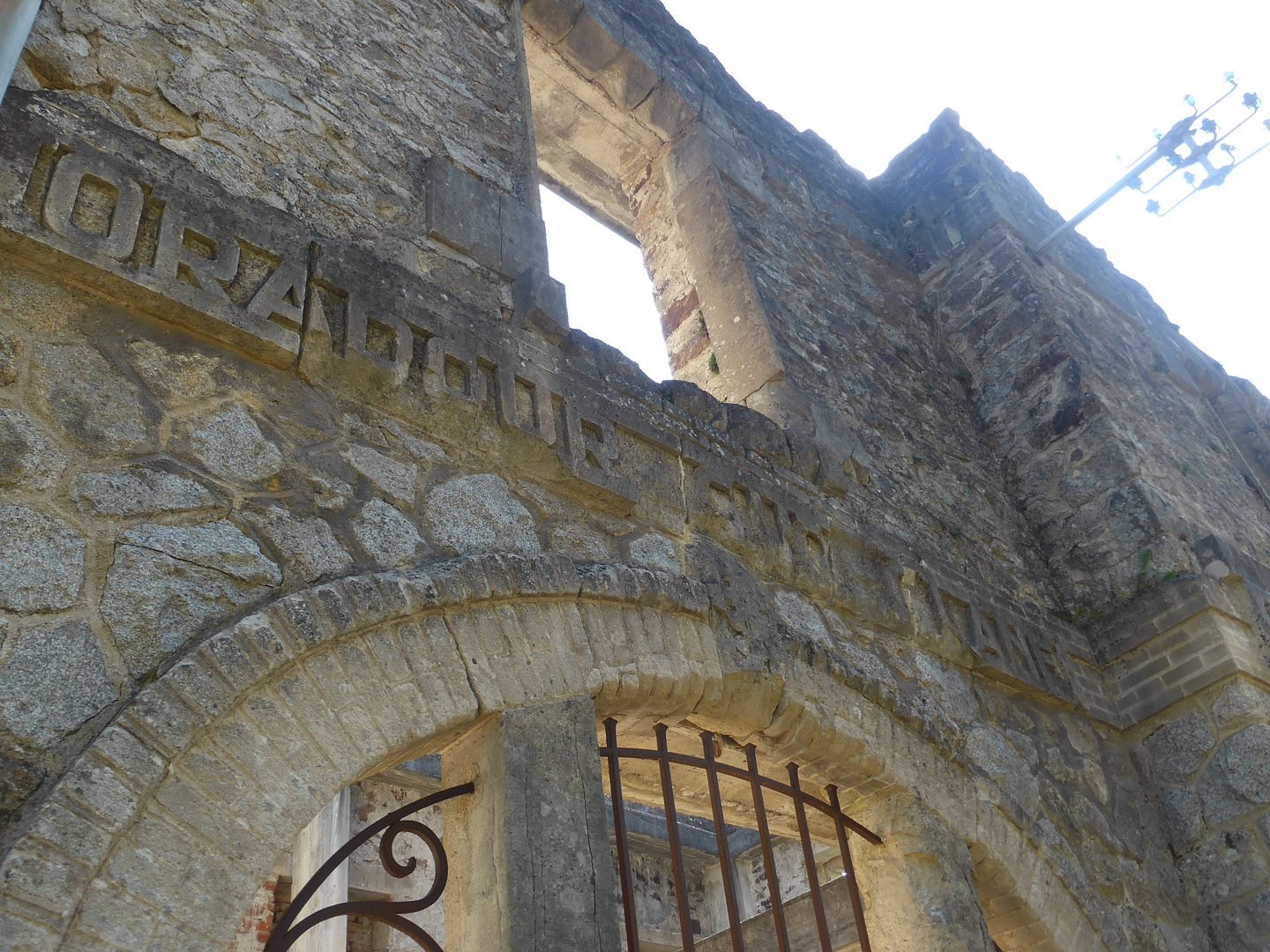
Some of you may remember that Oradour is France's preserved "martyred village" 25 kilometres from Limoges. It can't really be said that the massacre went unnoticed when it occurred, but the event occurred on June 10, 1944 just 4 days after D-Day in Normandy, so just about everybody had their eyes on the battle of Normandy. The Limousin region where Oradour is located was almost untouched by the war until this happened, and that is one of the elements that still makes this an open wound in the area 70 years later.
Why did the Oradour massacre occur? Well, it must be admitted that the Allied landing in Normandy was probably partly responsible. The resistance movement throughout France became much more active the moment the Allies arrived in Normandy, and the Nazi commanders felt it was necessary to smash them back into submission as quickly as possible. The rule of thumb was that for every German soldier wounded, 5 local residents would be executed by hanging and for each German soldier killed, there would be 10 executions. After D-Day, some of the Nazi divisions in the area were ordered to move to Normandy to assist the troops already there. They began to encounter quite a bit of resistance, and they reacted brutally, killing all of the partisans that they could get their hands on and shooting civilians at random as well. One of the batallion commanders, a certain Adolf Diekmann, even managed to horrify the other commanders because he deliberately killed women and children. The nearby city of Tulle was briefly liberated by the partisans, but it paid a heavy price when 99 men were hanged from balconies and lampposts and another 149 were immediately deported.
Things were degenerating more and more and Adolf Diekmann decided that more extreme measures were called for. On June 9th and 10th some prepatory meetings were held, and Oradour was selected. The German troops, including some forcibly enrolled soldiers from annexed Alsace, arrived at Oradour at the beginning of the afternoon on the 10th.
The armoured vehicles encircled the village and then a half dozen of them drove into town on the main street. These were actually the first German troops that most of the villagers had ever seen. Some of the shops rolled down their metal shutters as a precaution, but others kept doing business while keeping an eye on the soldiers. About 120 people immediately ran away through the hedgerows, which is what they all should have done, even though given the reputation of the Waffen SS, they all ran the risk of having a bullet in the back.
The Germans found the town crier and ordered him to call for a general assembly of all villagers. Unfortunately, there were quite a few more people in the village than usual, because it was a distribution day for tobacco and meat, so a lot of the outlying farmers had made a special trip to Oradour. Lots of people came willingly -- they thought there was going to be a routine announcement or something. Everybody else was forced towards the centre of the village, and the soldiers began to search all of the buildings. Invalids and sick people were pulled out of their beds. One additional piece of bad luck was the fact the Oradour had four schools. Even though it was Saturday afternoon and there were no classes in session, all of the children had been called to school that day for a medical checkup.
Okay, you can see where this story is going, so I'll just cut to the chase. 180 men and boys over the age of 14 were taken to six different execution sites in groups of about 30. These were buildings which they were order to empty of everything inside. They did not know why. And then at 4pm, the Nazi soldiers were ordered to kill them all, which was done in about 90 seconds of machine gun fire. The first round was to the legs, and when they were all on the ground, their bodies were riddled with bullets. Since there were still some moans and cries, the lucky ones received a bullet to the head, because immediately afterwards, the piles of bodies were covered with straw, hay and bundles of wood and set on fire, so a lot of them just burned to death.
Meanwhile, 350 women and children had been assembled in the church. An explosive incendiary device was placed right in the middle and set alight. The wooden chairs and other bundles of wood were thrown on the victims. The fire in the church was so intense that the bell melted and is still lying on the floor. One woman escaped by squeezing through a little window. Another woman saw her and threw her baby out the window and then managed to crawl out, too. But the soldiers saw her, so she and her baby were killed.
Out of each group of Nazi soldiers, the ones who were not shooting the villagers were told to go through the houses and collect all items of value -- jewellery, money, fabric, musical instruments, bicycles and livestock. They also took hundreds of bottles of wine and champagne.
What was happening in Oradour did not go unnoticed in the surrounding farms, as the people had heard gunshots and also their children had not returned from their medical examination. So a lot of people came towards the village, and most of them were murdered as well. 642 people died in all on that day.
I'll get to some of the repercussions later, but it's time to look at some pictures. An underground memorial museum was opened in 1999 next to the site. So now you park your car, go into the memorial (no photographs allowed) and then you exit into the ruins of the village. On the day I visited, most of the tourists appeared to be German. I guess this is a good thing.










This is the old tramway station.


This is the post office.







